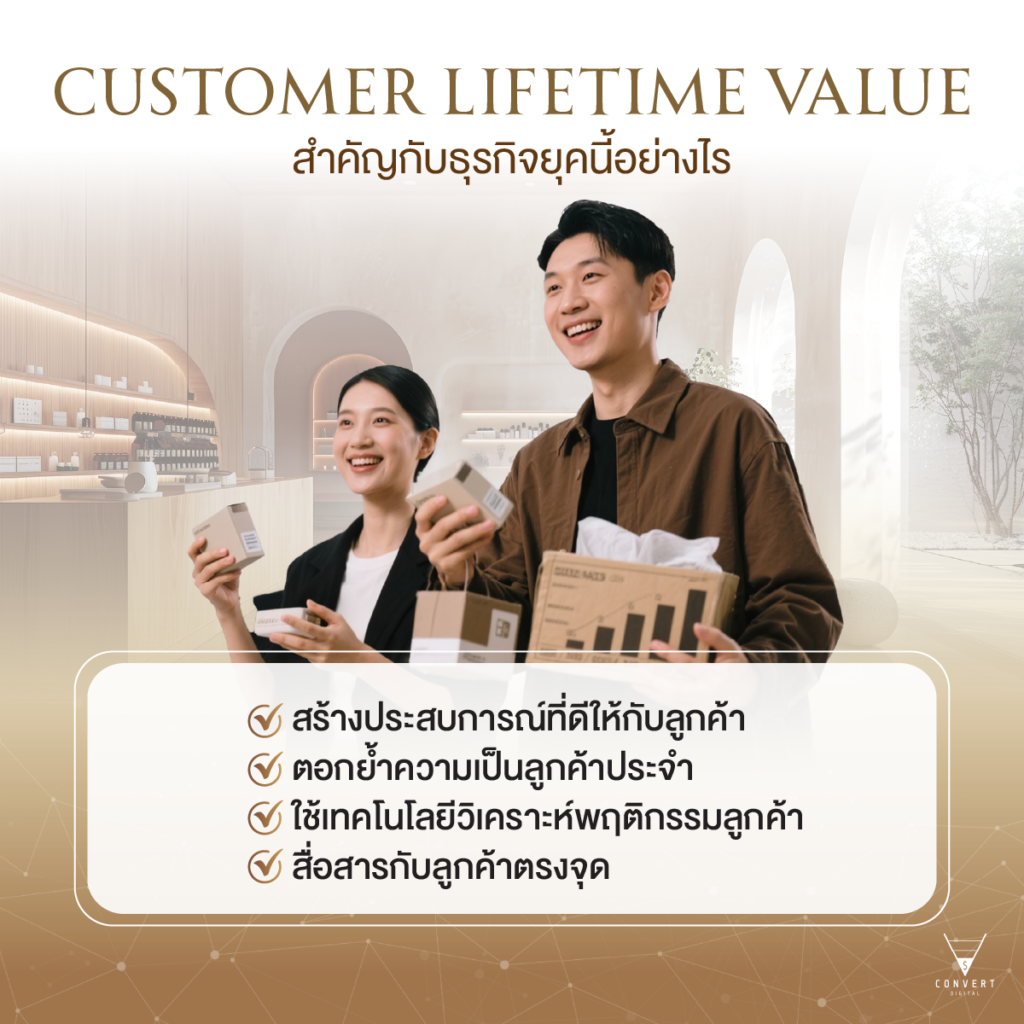In an era of fierce business competition, understanding customers and managing customer relationships are crucial factors for business success. One concept that plays a significant role in this area is Customer Lifetime Value—a key metric that indicates important insights for businesses. Today, we invite everyone to understand its importance and discover how this approach can benefit businesses.
What is Customer Lifetime Value?
Customer Lifetime Value is the total value that a customer will generate in revenue for a business throughout the period they continue to purchase products or services from that business. It’s calculated by estimating the total revenue expected to be received from a customer throughout their relationship or transaction period with the business. Customer Lifetime Value, or CLV, represents a long-term perspective.
Why is Customer Lifetime Value Important for Modern Businesses?
Evaluating the True Value of Customers
Understanding CLV helps businesses assess the overall purchasing value of each customer, not just looking at single-transaction sales volumes, but considering the entire duration the customer will stay with the brand in the long term. This enables more efficient allocation of marketing budgets and service resources.
Efficient Customer Relationship Management
When business owners know the CLV figures, they focus on building long-term relationships with customers to increase their value, rather than concentrating solely on acquiring new customers. Retaining existing customers and creating brand loyalty becomes a key objective that helps increase long-term revenue.
Marketing Planning and Cost Management
Marketing planning helps businesses determine appropriate marketing strategies, such as using exclusive promotions for high-value customer segments or investing in product and service development that meets regular customers’ needs. It also helps balance costs with Customer Acquisition Cost according to what the business expects to receive.
Data-Driven Business Decision Making
Using CLV data enables business owners to make precise decisions about investments, new product launches, or market expansion, as they have clear information about the expected returns from customers in the long term.
Basic Calculation Methods
Calculating Customer Lifetime Value can be done in various ways, from using basic formulas such as multiplying average revenue per purchase by the number of times customers buy products, to using complex analytical models that include customer retention probability, customer behavior analysis, and customer retention costs.
Basic CLV Calculation Formula
For a basic calculation formula, here’s one we present:
CLV = APV × APF × ACL
With three components calculated from:
- APV or Average Purchase Value: The average purchase value, showing how much customers spend on each purchase
- Formula: Total Revenue / Total Number of Orders
- APF or Average Purchase Frequency: The average purchase frequency, showing how often customers make repeat purchases within a specific period
- Formula: Total Number of Orders / Total Number of Customers
- ACL or Average Customer Lifespan: The average customer lifespan, showing the average duration customers continue to purchase products or services from your business
- Formula: (Sum of each customer’s lifespan) / Total Number of Customers
CLV Calculation Example
Suppose you run an online dessert shop and want to calculate the CLV of one regular customer with the following data:
- Customer purchases desserts averaging 350 baht per purchase (Average Purchase Value)
- Customer orders desserts an average of 3 times per month (Average Purchase Frequency)
- Customer has been a regular customer for 18 months (Average Customer Lifespan)
Using the above formula, we calculate CLV as follows: CLV = 350 baht × (3 times/month) × 18 months = 18,900 baht
This means this customer has a predicted lifetime value of 18,900 baht. This figure demonstrates the true quality purchasing behavior of regular customers and helps you plan customer care investments efficiently.
How to Increase Customer Lifetime Value for Your Business
Create Excellent Customer Experiences
Customers tend to make repeat purchases when they receive good experiences, such as fast and quality service, appropriate response to customer needs from the store, and personalized attention to customers.
Reinforce Customer Loyalty
Promote customer loyalty through membership programs, point accumulation systems, and special privileges by offering discounts or gifts on various occasions to encourage customers to return for repeat purchases of products or services.
Use Data and Technology to Analyze Customer Behavior
Using CRM systems helps businesses strengthen relationships with existing customers and acquire new customers quickly, or AI technology for collecting customer data for analysis and behavior prediction, helping businesses offer promotions or products that better target their audience.
Communicate with Customers Continuously and Precisely
Effective communication through sending news, promotions, or beneficial information via various channels such as email, social media, or mobile applications helps maintain customer relationships and create continuous brand awareness.

Customer Lifetime Value: Real Business Application Examples
E-commerce businesses often use CLV to analyze customers, determining which customer segments are most profitable and how likely they are to make repeat purchases, to plan promotions, adjust prices, or offer additional services that appeal to customers.
Service businesses also use CLV to determine costs for retaining existing customers, such as providing free consultations, after-sales service, or organizing special activities for regular customers. Investment in this area helps increase engagement and reduce the rate of switching to competitors’ services.
Improve Your Marketing Results with Convert Digital
While Customer Lifetime Value is a tool for measuring overall customer purchasing value, which is important for current business operations because it helps businesses understand customers deeply and manage budgets and strategies efficiently to create growth and competitive advantages in the long term, we must acknowledge that focusing solely on CLV may not yield optimal results. Combining marketing with other methods will further enhance sustainable business efficiency in the long term, whether it’s building a strong social media foundation, creating trustworthy websites and SEO, or advertising in all important campaigns. These elements will increase customer attraction even more. If you’re a business owner looking for comprehensive marketing consultation for all the above-mentioned aspects, come to Convert Digital. We’re happy to be part of your team to help your business grow beyond expected targets.
About Post Author
Tidarat Srivilai : Content Team Lead
Content expert who loves updating herself with new knowledge. She has over 10 years of experience in both marketing and journalism. A passionate foodie with a love for exercise, she also excels at baking delicious treats in her spare time.
